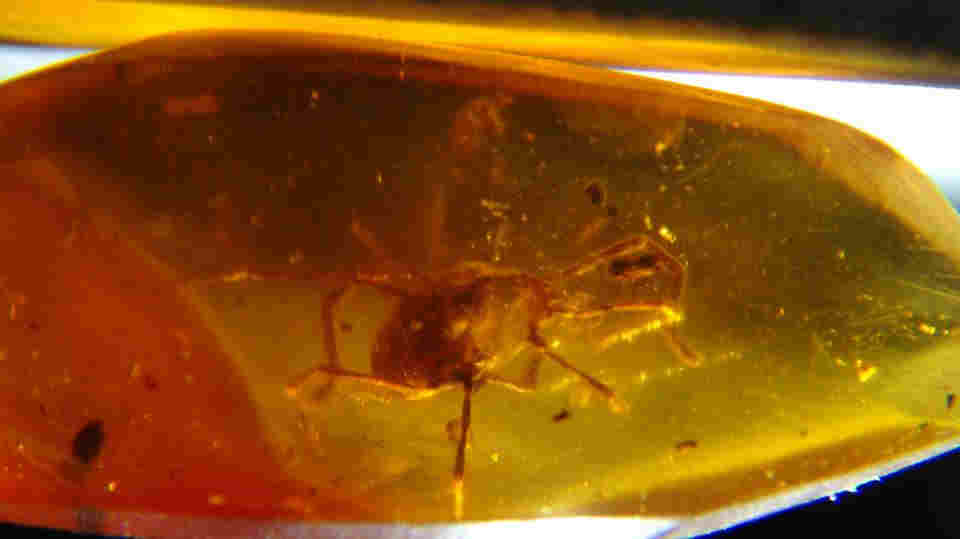"Antediluvian" DNA studies
The post-PCR era heralded a wave of publications as numerous research groups tried their hands at aDNA. Soon a series of incredible findings had been published, claiming authentic DNA could be extracted from specimens that were millions of years old, into the realms of what Lindahl (1993b) has labelled Antediluvian DNA. The majority of such claims were based on the retrieval of DNA from organisms preserved in amber. Insects such as stingless bees (Cano et al. 1992a; Cano et al. 1992b), termites (De Salle et al. 1992; De Salle et al. 1993), and wood gnats (De Salle and Grimaldi 1994), as well as plant (Poinar et al. 1993) and bacterial (Cano et al. 1994) sequences were extracted from Dominican amber dating to the Oligocene epoch. Still older sources of Lebanese amber-encased weevils, dating to within the Cretaceous epoch, reportedly also yielded authentic DNA (Cano et al. 1993). DNA retrieval was not limited to amber.
Several sediment-preserved plant remains dating to the Miocene were successfully investigated (Golenberg et al. 1990; Golenberg 1991). Then, in 1994 and to international acclaim, Woodward et al. reported the most exciting results to date[14] — mitochondrial cytochrome b sequences that had apparently been extracted from dinosaur bones dating to more than 80 million years ago. When in 1995 two further studies reported dinosaur DNA sequences extracted from a Cretaceous egg (An et al. 1995; Li et al. 1995), it seemed that the field would revolutionize knowledge of the Earth's evolutionary past. Even these extraordinary ages were topped by the claimed retrieval of 250-million-year-old halobacterial sequences from Halite.
A critical review of ancient DNA literature through the development of the field highlights that few studies after about 2002 have succeeded in amplifying DNA from remains older than several hundred thousand years. A greater appreciation for the risks of environmental contamination and studies on the chemical stability of DNA have resulted in concerns being raised over previously reported results. The dinosaur DNA was later revealed to be human Y-chromosome, while the DNA reported from encapsulated halobacteria has been criticized based on its similarity to modern bacteria, which hints at contamination. A 2007 study also suggests that these bacterial DNA samples may not have survived from ancient times, but may instead be the product of long-term, low-level metabolic activity
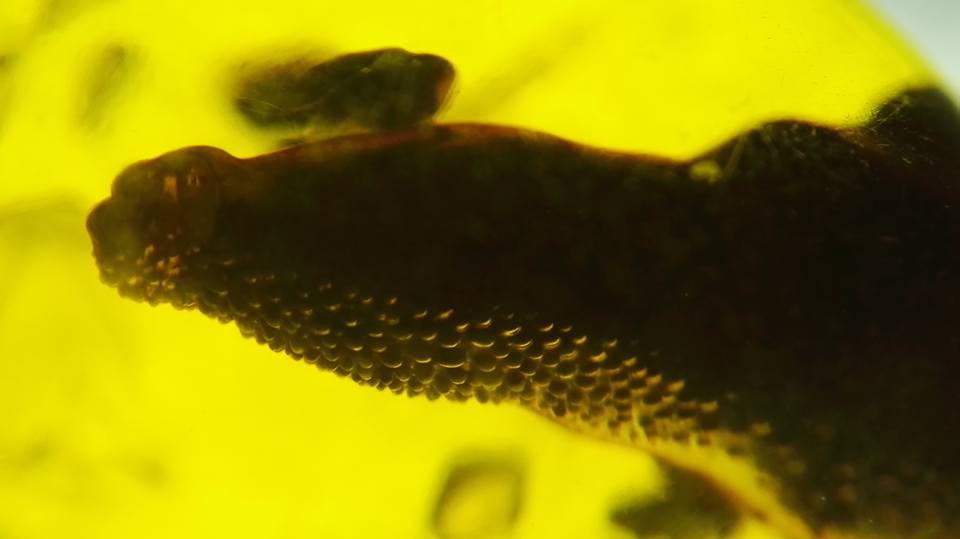
This leech in amber has now been given a permanent home at the Myanmar Amber Museum (https://www.myanmarambermuseum.org/) and now on permanent public display, there are rumours in Yangon that the local people call the leech Donald
Manchester University scientists in their new study, published in the open-access journal PLoS ONE, have revealed this technique is unlikely to succeed.
They used highly-sensitive sequencing techniques – the most advance type of DNA sequencing – on insects in copal, the sub-fossilized resin precursor of amber.
The study was conducted wearing full forensic suits in an ancient DNA facility, which comprises a suite of independent, physically isolated laboratories, each with an ultra-filtered air supply maintaining positive displacement pressure and a managed access system.
“In the original 1990s studies DNA amplification was achieved by a process called the polymerase chain reaction (PCR), which will preferentially amplify any modern, undamaged DNA molecules that contaminate an extract of partially degraded ancient ones to give false positive results that might be mistaken for genuine ancient DNA,” explained senior author Prof Terence Brown.
“Our approach, using ‘next generation’ sequencing methods is ideal for ancient DNA because it provides sequences for all the DNA molecules in an extract, regardless of their length, and is less likely to give preference to contaminating modern molecules.”
The scientists concluded that their inability to detect ancient DNA in relatively young – 60 years to 10,600 years old – sub-fossilized insects in copal, despite using sensitive next generation methods, suggests that the potential for DNA survival in resin inclusions is no better, and perhaps worse, than that in air-dried museum insects.
This raises significant doubts about claims of DNA extraction from fossil insects in amber, many millions of years older than copal.
“Intuitively, one might imagine that the complete and rapid engulfment in resin, resulting in almost instantaneous demise, might promote the preservation of DNA in a resin entombed insect, but this appears not to be the case. So, unfortunately, the Jurassic Park scenario must remain in the realms of fiction,” Dr Penney concluded.
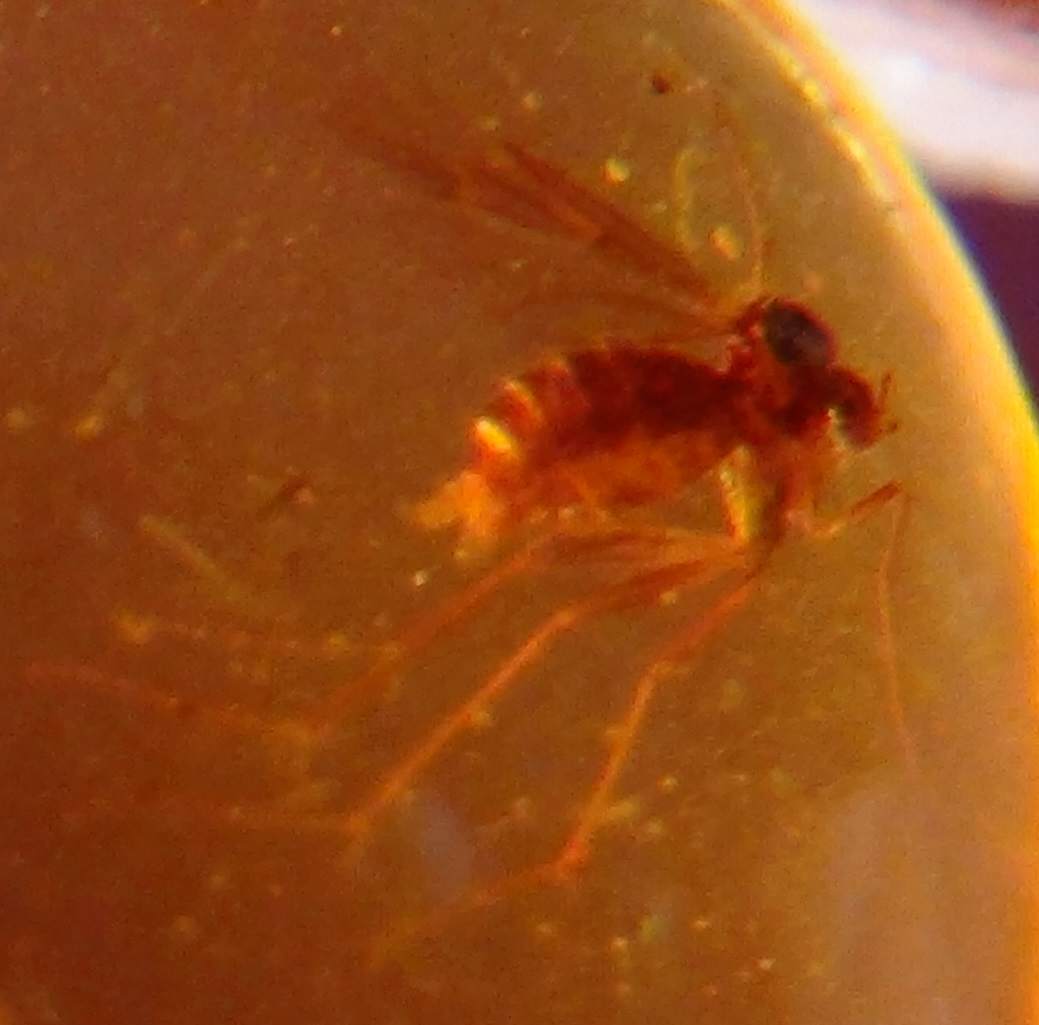
The Search for DNA in Amber - National History Museum (NHM) London
Amber, the fossilized resin of ancient trees, is remarkable for its ability to preserve prehistoric, organic material. These inclusions, and the successful analysis of their preserved DNA fragments, could provide scientists with incredible insights into the past. Is it now possible to extract dinosaur DNA from insects and re-create today these creatures from ancient history? Andrew Ross and Jeremy Austin discuss this controversial debate in the
light of their recent research findings.
Andrew Ross:
DNA (deoxyribonucleic acid) is the molecule that contains the information necessary for the growth and function of all living organisms. It is made out of subunits called nucleotides, which are joined together to form a double helix. Biologists in recent years have been extracting it from organisms to investigate the relationships between them. In the 1980s it was realized that cell structures are preserved in insects in amber, so then the search was on to find DNA in the insects' cells.
DNA was first reported to have been recovered from amber in 1992 when scientists in California claimed to have extracted fragments of DNA from an extinct species of bee ( Proplebeia dominicana) in Dominican amber. Shortly afterwards reports appeared of DNA from an extinct species of termite ( Mastotermes electrodominicus), also in Dominican amber, by scientists in New York. This was followed by reports of DNA extraction from a beetle in Lebanese amber. However, only small bits of the DNA string were recovered. There has been some scepticism as to whether these claims are genuine or the result of contamination. Experiments on the survival rate of DNA have shown that it breaks down very quickly, particularly in the presence of water. However, the insects in amber are dehydrated and if this happened quickly then it could possibly halt the decay of the DNA.
At The Natural History Museum in London, scientists have tried to repeat the experiments to obtain DNA from the Dominican amber bee Proplebeia dominicana. These bees are common in Dominican amber because they collect resin to make their nests. Several suitable specimens were selected, broken up and tested, but no insect DNA was recovered. This casts doubt on the earlier reports because it appears that the experiments are not replicable, which is a fundamental
requirement for reliable scientific results.
The film Jurassic Park is based on the notion that ancient dinosaur DNA can be extracted from fossilized mosquitoes preserved in amber. It assumes that after feeding on dinosaurs, these prehistoric mosquitoes became trapped in certain tree resins and preserved, retaining traces of dinosaur blood, and therefore dinosaur DNA, in their guts. The resin solidified and eventually after millions of years hardened over time to form pieces of amber, time capsules containing perfectly preserved dinosaur DNA, that Jurassic Park's scientists use as genetic "blueprints" to clone living dinosaurs. So how close is this fictitious story to the truth? In the following interview, expert in ancient DNA Jeremy Austin gives us his views.
The Natural History Museum:
There have been recent reports in the media about real-life attempts to extract ancient DNA from insects preserved in amber. How easy is it to isolate DNA
from this source, and has anyone been successful?
Jeremy Austin:
DNA is extremely fragile, degrades in water and tends to fall apart and lose its "signature" very easily. Research has shown that the DNA of dead organisms begins to fragment very rapidly unless it has been preserved under unique conditions. Preservation in amber seemed to offer a reasonable option and there were several reports, including the one in 1992, that claimed that DNA fragments had been recovered from insects that had died between 25 and 125 million
years ago. These reports caused considerable excitement, but despite intensive efforts no other researchers, including the team at The Natural History Museum, have been able to repeat and verify these results. As a result of these findings, most scientists now agree that DNA doesn't survive in fossilized insects in amber.
NHM:
Do you think it is likely that scientists will ever be able to extract dinosaur DNA from fossil mosquitoes in amber?
Austin: Even though there is a mosquito now identified in Canadian amber as being from the time of the dinosaurs, I think our general lack of success in isolating ancient insect DNA from specimens preserved in amber makes the chances of isolating enough dinosaur DNA from the same source virtually nonexistent.
NHM:
Has anyone been able to isolate dinosaur DNA from other sources like fossilized bone?
Austin:
Fossilized bone consists of minerals that have replaced the original organic material this, coupled with the fragility of DNA, makes it extremely unlikely that even fragments of dinosaur DNA will have survived to modern times. There have been recent preliminary reports claiming successful isolation of ancient DNA from dinosaur bone but no scientist has been able to conclusively prove that they are fragments of dinosaur DNA. One of the difficulties in verifying
the identity of these fragments is that DNA is a constituent of all living organisms and the highly sensitive experimental procedures that are used to isolate fragments of ancient DNA are susceptible to contamination from contemporary sources. Scientists can inadvertently isolate DNA from organisms that live in the soil surrounding the fossil specimen for example, or from their own skin.
NHM:
Do you think it likely that scientists will ever be able to extract enough DNA from fossilized remains to reconstruct the complete DNA sequence for a dinosaur?
Austin:
I think it would be an impossible task. Even if we could successfully isolate fragments of dinosaur DNA, mapping the correct DNA sequence for a complete dinosaur genome would be like trying to predict the contents, and order, of a complete library of information, from the facts contained in just one or two pages of a single book.
To give you an idea of the complexity of the problem I have been analysing DNA from specimens of lizards that became extinct about 300 years ago. The largest single piece of DNA sequence that I have been able to obtain so far, after 6 months of effort, is 50 base pairs. These minuscule snippets
of information tell me that I am looking at a lizard from a particular group but it is a quantum leap away from enabling me to predict the thousands or millions of base pair sequences for a single feature of the animal--let alone its complete genome.
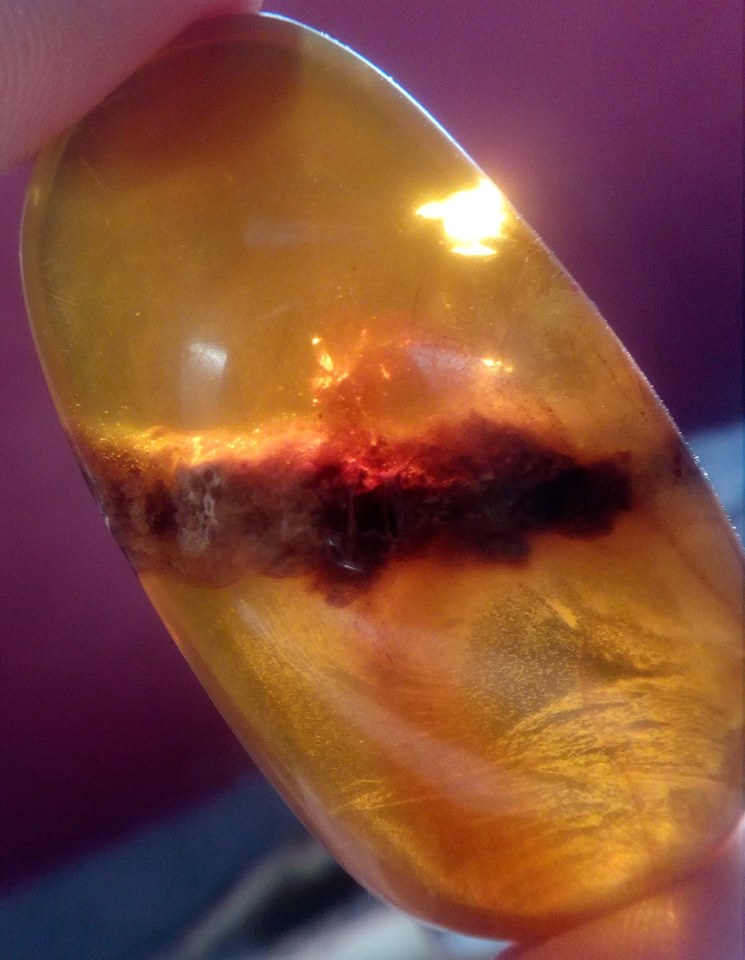
NHM:
What do you think about Dr. David L. Stearn's recent prediction that in years to come DNA mapping techniques will enable scientists to map a complete dinosaur DNA sequence by working backwards from the DNA sequences that they will eventually unravel for birds, reptiles and mammals?
Austin:
Scientists have successfully mapped the complete DNA sequence for two bacteria (Haemophilus influenzae and Methanococcus jannaschii), a yeast (
Saccharomyces cerevisae) and nematode worm ( Caenorhabditis elegans ) and there are research projects under way to try and map the complete DNA sequence for humans and the fruit fly Drosophila but they will take years to complete. The Human Genome Project, for example, has research teams collaborating around
the world to map the three billion base pairs that constitute the human DNA sequence but even with this collaborative effort it will have taken close to fifteen years to complete.
Although it may be possible to map the DNA sequences for birds, reptiles and mammals in theory, I'm not convinced that this is going to happen in the near future for reasons of the enormous cost and effort involved. And even if complete genome sequences were available for living mammals, birds and reptiles predicting the sequence of a dinosaur genome with any degree of accuracy would be an impossibly complex task. Think of the dinosaur sequence that we are trying to predict as a hypothetical jigsaw puzzle made up of more than one billion pieces and each piece instead of being a flat piece of card is a cube with a different fragment of the overall picture on each side. So to reconstruct this jigsaw puzzle you not only need to position all the pieces in the correct place, you have to have the correct face showing too. That's how impossible the problem is!
NHM:
Stearn also predicts that around 200 years from now, having completed the dinosaur DNA sequence, scientists will be in the position to build the first dinosaur made by humans. Could this be the basis upon which the fictitious Jurassic Park finally becomes a reality?
Austin:
This is all highly speculative. Even if scientists were able to successfully reconstruct the DNA sequence for a dinosaur genome how would they "clone" this animal from its genetic blueprint and would they ever want to? I think the sheer complexity of first sequencing the genome and then finding a way of using this information to build a living organism makes it an insurmountable task and I personally remain convinced that dinosaurs will safely remain
fascinating creatures that belong to the past.
Andrew Ross:
There are many reasons why such a venture will remain fiction. First, there are no known insect-bearing Jurassic ambers. Second, contrary to popular belief, mosquitoes (Diptera: Culicidae) are extremely rare in amber. There is one recorded from Canadian amber, although there are only a handful known in Baltic amber and a few tens of specimens in Dominican amber. There are, however, other biting insects, known from Mesozoic deposits, that may have
fed on dinosaurs. Black-flies (Diptera: Simuliidae) are known from Middle Jurassic deposits and two have been found in Cretaceous amber. The oldest horsefly (Diptera: Tabanidae) was found recently preserved in limestone of Lower Cretaceous age in Dorset, England, but none are known in Cretaceous amber. Biting midges (Diptera: Ceratopogonidae) have been found in Canadian, Siberian and Lebanese amber, but they can feed on the blood of many things, including other
insects. A few are known in Canadian amber that have jaws adapted for biting vertebrates, however it is debatable whether they could have fed on dinosaurs. Sandflies (Diptera: Psychodidae) have been found in Burmese and Lebanese amber and one has large mouthparts similar to those of a living species that feeds on the blood of crocodiles. This type of fly could well have fed on the blood of dinosaurs.
However, it is extremely unlikely that anyone will destroy this specimen on the remote chance of extracting DNA because it is a male and only female sandflies feed on blood.
Even after an insect is trapped in resin, bacteria and enzymes continue working in the gut, rotting the insect from the inside. Indeed, many insects preserved in amber, particularly Baltic, are completely hollow without any internal tissue preserved. If it is so difficult to get DNA from an
insect in amber, then the chances of getting any DNA from something it fed on are even more remote. If it were possible to extract DNA from a blood meal in an amber insect, only tiny amounts of the entire DNA string (genome) would be recovered and it would probably be contaminated with bacterial and insect DNA. Key parts of the genome would be required to work out which type of animal the blood came from. Biologists could only guess at what was missing from the complete DNA string, without knowing for sure. Although scientists can manipulate and make copies of DNA, they can't make it grow into an animal.
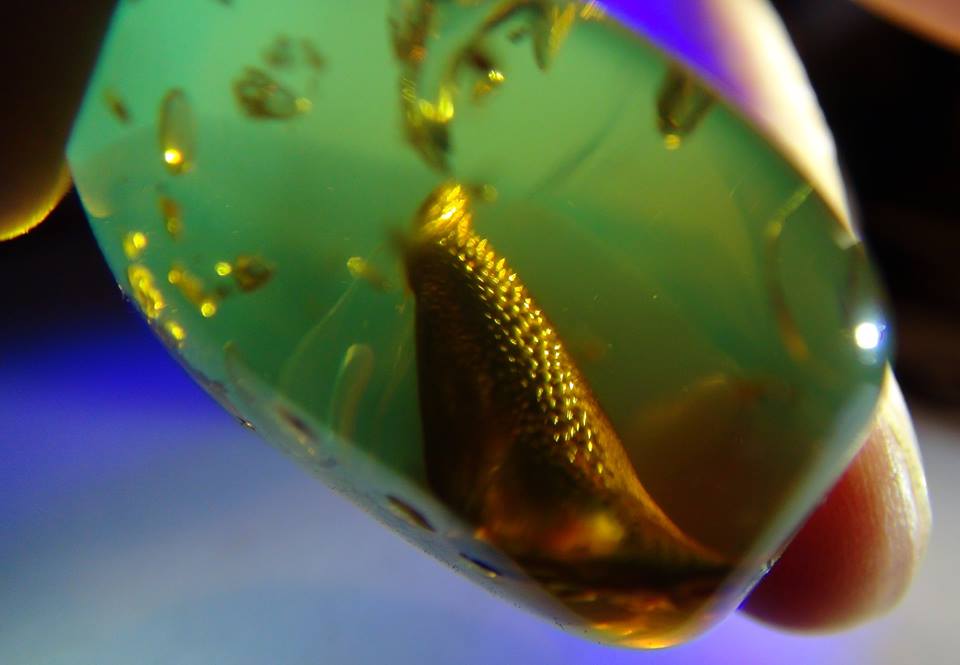
Researchers specializing in ancient DNA
Alan Cooper
Joachim Burger
M. Thomas P. Gilbert
Johannes Krause
Svante Pääbo
Hendrik Poinar
Beth Shapiro
Mark G. Thomas
Eske Willerslev
Science Daily in April 2017 reported the following:
Two monkeys grooming each other about 20-30 million years ago may have helped produce a remarkable new find -- the first fossilized red blood cells from a mammal, preserved so perfectly in amber that they appear to have been prepared for display in a laboratory.
The discovery, published in the Journal of Medical Entomology, also describes the only known fossils of a type of parasite that still exists today, Babesia microti, which infects the blood cells of humans and other animals.
Two small holes in the back of a blood-engorged tick, which allowed blood to ooze out just as the tick became stuck in tree sap that later fossilized into amber, provide a brief glimpse of life in a tropical jungle millions of years ago in what is now the Dominican Republic.
"These two tiny holes indicate that something picked a tick off the mammal it was feeding on, puncturing it in the process and dropping it immediately into tree sap," said George Poinar, Jr., professor emeritus in the College of Science at Oregon State University, author of the study and an international expert on plant and animal life forms found preserved in amber.
"This would be consistent with the grooming behavior of monkeys that we know lived at that time in this region. The fossilized blood cells, infected with these parasites, are simply amazing in their detail. This discovery provides the only known fossils of Babesia-type pathogens."
The fossil parasites add to the history of the Order Piroplasmida, of which the Babesiidae is one family. In humans, the parasite B. microti can cause babesiosis, a disease with symptoms that resemble malaria and can be fatal. A related parasite in cattle can cause Texas cattle fever, which has been a historic problem in the plains states, and just this spring is causing another outbreak that has led to quarantines on more than 500,000 acres of land in Texas.
"The life forms we find in amber can reveal so much about the history and evolution of diseases we still struggle with today," Poinar said. "This parasite, for instance, was clearly around millions of years before humans, and appears to have evolved alongside primates, among other hosts."
Part of what makes these fossils unique, Poinar said, is the clarity by which the parasites and blood cells are preserved, almost as if they had been stained and otherwise treated in a laboratory for inspection. The parasites were different enough in texture and density to stand out clearly within the red blood cells during the natural embalming process for which amber is famous

